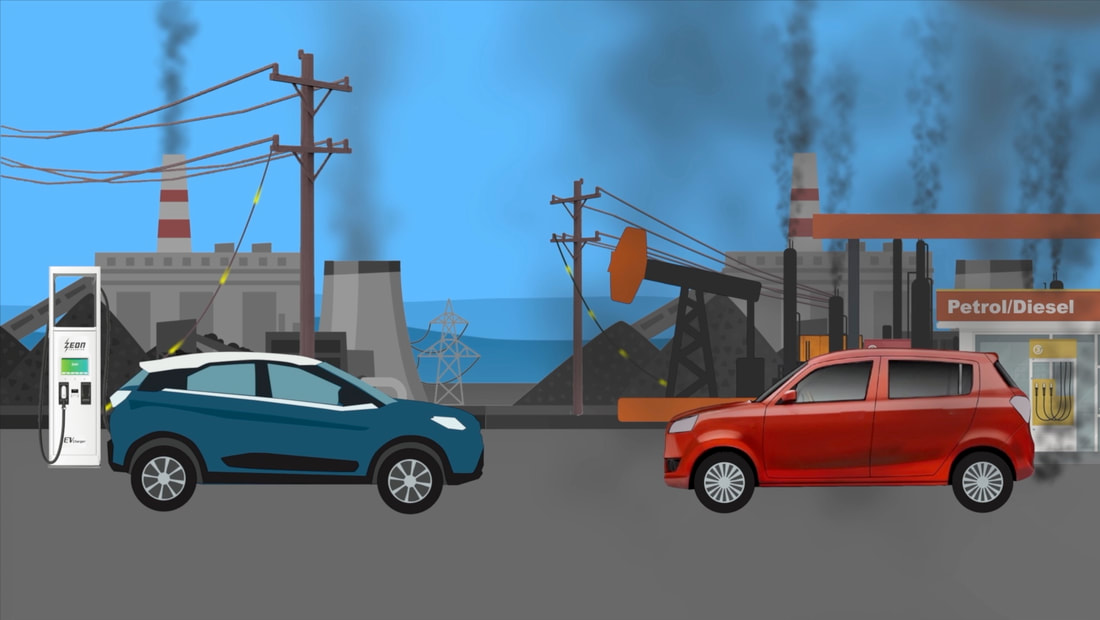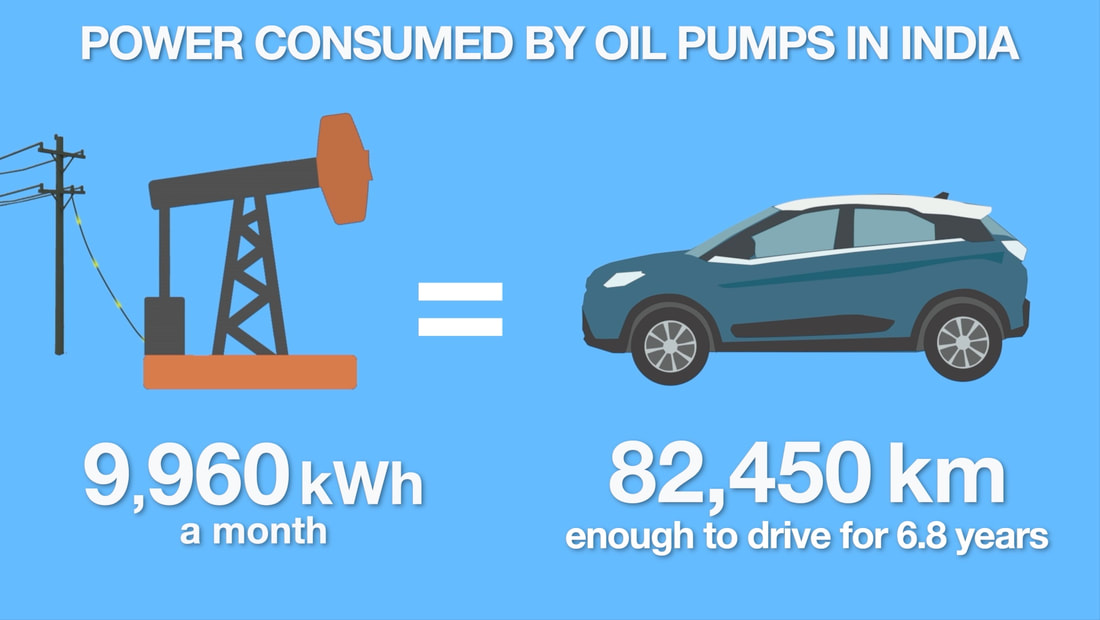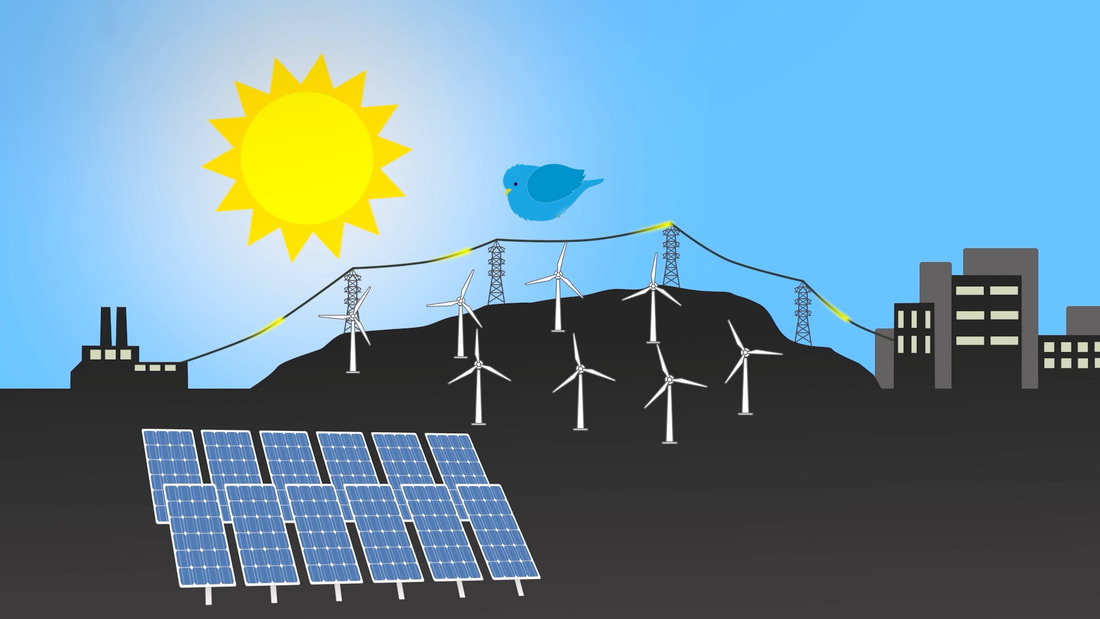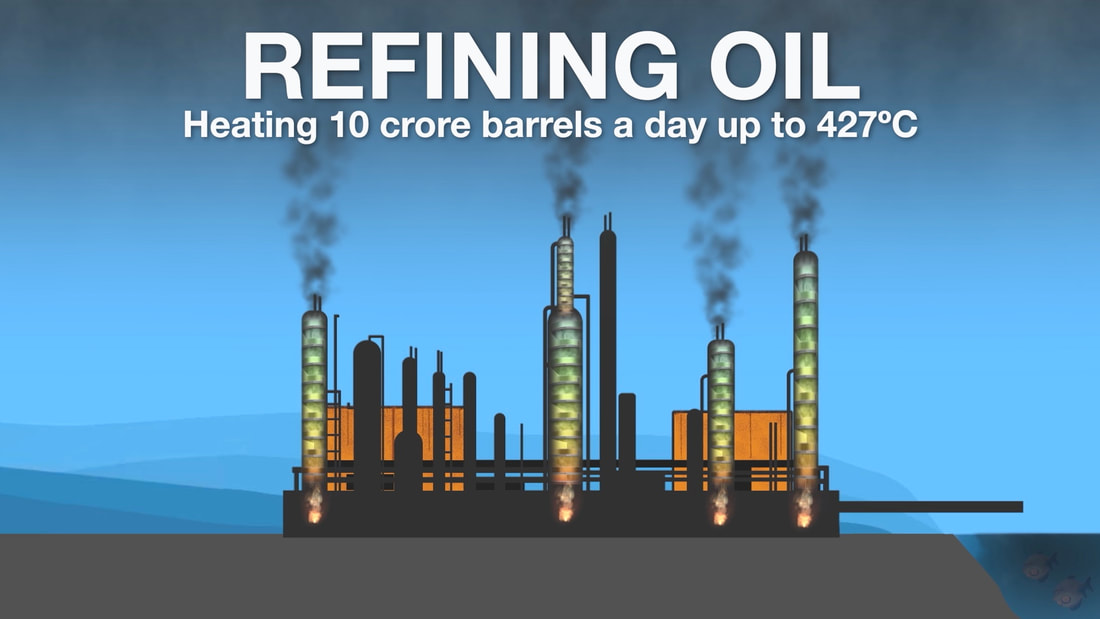So what goes into producing the fuel that you burn in your car every day? Diesel or petrol starts as oil, on average 1,798 meters below the surface of the earth. A great deal of oil is extracted using what is called a pumpjack. Pumpjacks don’t run by themselves, in most cases they use electricity. It takes on average 9,960 kilowatt hours of electricity every month to drive one pumpjack. To put that into context, that is enough electricity to power a Tata Nexon EV for 82,450 km. Enough to drive an EV for 6.8 years.
The electricity usage for the 1,42,054 onshore wells that supply oil to India is over 1,415 GWh a month! That is a lot of electricity and that is just to get the oil out of the ground! If we used that electricity to power electric vehicles directly, it would be enough to power over 1 crore 17 lakh (1,17,12,422) Tata Nexon EV' for a month.
That's just oil wells on land...
What about deep sea drilling?
The most common way of powering an offshore oil rig is with a diesel generator. An average oil rig generator uses 20 to 30 metric tonnes of diesel per day. The electrical equivalent of this is 26,47,058 kilowatt hours per month. There are an estimated 462 offshore oil rigs producing oil for India using over 13 Crore 80 Lakh kWh of energy a month. All this oil pumping combined would be enough to power over 1 crore 28 lakh (1,28,61,024) Tata Nexon EV’s. This is just from the energy used to pump oil out of the ground and offshore for India.
So not only does fuel pollute when we burn it in our cars, we are also using a huge amount of electricity just to pump the oil that makes the fuel. Combining the pollution from the tailpipe emissions with the emissions generated to pump oil out of the ground… is not a pretty picture. And pumping oil is not clean, crores of litres are spilled into the ocean every year creating havoc for fish and other wildlife! Then that oil needs to be transported, most of the oil is pumped through pipelines. There are over 5 lakh 43 thousand km of pipeline in the world carrying most of the 10 crore barrels a day we consume.
These pipelines use pump stations that use even more energy. Oil is also shipped, the oceans are unregulated as regards emissions so ships use the cheapest dirtiest fuel possible to keep costs down, making them one of the largest pollution sources on the planet. Shipping is responsible for an estimated 100 crore tonnes of CO2 per year, and 10% of that is shipping oil. Because these tanker ships pollute so much, many countries do not allow them to operate near their coastline, so they have to be towed into port where the oil is transferred to a refinery. Refining oil takes a huge amount of energy and generates even more pollution. Refining is done by heating oil up to 427º C. Heating 10 crore barrels of oil a day to these temperatures requires an enormous amount of energy. Heating this oil generates so much pollution, refineries create a serious health hazard anywhere they operate. Refineries are the number one pollution source in many major cities around the world. It is so bad that people living near these refineries have a marked increase in lung disease. Once the oil has been refined, it is transported to fuel stations in diesel trucks creating even more pollution. Then this fuel is burned in cars and trucks right in our cities where we live and breathe. These cars and trucks have internal combustion engines that are extremely inefficient. 70% of the energy from burning fossil fuel is wasted as heat, while only 30% goes to turn your wheels. So after we use all that electricity pumping oil out of the ground, refining it, transporting it, we then waste 70% when we burn it.
Fossil fuel production is an incredibly dirty inefficient process from start to finish. When we contrast all this to powering an Electric Vehicle, the difference is very stark. Electricity does not need to be pumped from thousands of meters underground, transported with trucks, or trains, or pumped along pipelines, it does not need to be shipped overseas, it does not need to be refined, and it is not polluting where we live and breathe. Even if electricity is produced from burning coal, the power plant is far away from population centers, transferred over power lines keeping any direct pollution away from the population.
And if the EV is powered with clean electricity, it is clean from start to finish.
In India 39.1% of electricity comes from sources that emit no CO2. In Europe it is even better at 56%. And the percentage of clean energy is growing every year as coal and gas plants are being replaced by renewable energy sources.
So what about the batteries? What happens to EV batteries when they get old and are discarded? When no longer practical in an Electric Vehicle batteries can be used as energy storage to power a home or business, giving them a second life. And when they can no longer be used for this, they are recycled, broken down to recover the valuable metals in these batteries to be reused in the next generation of Electric Vehicles.
It looks a bit silly to use so much electricity to pump oil out of the ground, create tons of pollution transporting and refining it, to finally waste 70% of it burning it in our cars when we could simply use that electricity directly to power Electric Vehicles, eliminating the pollution from refining and burning petrol or diesel in inefficient internal combustion engines. It is obvious when you look at the big picture, oil production is a dirty wasteful process, especially when compared to the alternative, powering EV's with renewable electricity.
One of the last obstacles preventing many people from going electric besides misinformation, is people who live in apartments and condominiums with shared parking. Many of these residents have no way to install a car charger. If you are a lawmaker, sit on a city council or local council, if you serve on the board of any housing association, if you own rental property, you can do something to help. Vote to install car chargers or indeed install them yourself in car parks or on the street, so people who live in apartments can have a place to charge their Electric Vehicle. There are companies that even offer ways that you can make a profit from these chargers. Support taxing of fossil fuels and using the subsidies to support the shift to Electric Vehicles, with the right incentives and political will change can happen very quickly. In Norway they have made a huge shift to electric vehicles in a very short time. Electric Vehicles sales in Norway have reached over 50% of all vehicles sold. Support the installation of solar panels wherever possible. Going solar now is cheaper than buying electricity from the grid and starts paying for itself from day one. And if you are fortunate enough to own a home, get an EV and install solar panels. You will save thousands on fuel and electricity and the peace of mind knowing that you are not contributing to the horribly dirty oil and gas industry.
Share this article/video, post it to forums like Reddit, NextDoor, Facebook and others to help spread the word.
Lastly this is an open source video, you are free to translate this video into another language for reposting.
Contact the GasTroll channel for a version you can add a translated voice over and text to.
The day when our cities are clean of sulphur dioxide, carbon monoxide and other toxic chemicals and particulates emitted from tailpipes and oil refineries can happen.
We have the technology to do this now. Supporting this transition to Electric transportation will bring this day closer to fruition.
Thanks for watching/reading, and stay clean!
You can help support the creator of this video by checking out Best Clock Radio, a streaming radio and podcast player with 5 alarms, made for the iPad and iPhone.
You can help PluginIndia stay independent by supporting via Patreon or becoming a youtube channel member.
- Oil consumption by India: India Oil
- Range of Tata Nexon EV: Tata Nexon EV vs Tata Nexon Petrol AMT : Charging Costs
- (9960/30.2)*250 = 82,450 km
- Source of oil & gas and it's location, inside and outside India: Oil and gas industry in India
- Onshore vs offshore oil: Global crude oil onshore and offshore production distribution 2025
- Average barrels per day per pump jack: OIL AND GAS FACTS & FIGURES 2019
- How many Tata Nexon EVs per month for onshore oil?
- Tata Nexon EV travels 1000 km per month (12k per year). For 30.2 kWh pack it goes 250 km. For 1k km it uses (1000/250)*30.2 = 120.8 kWh. So for 141,48,60,569 kWh / (120.8 kWh / EV) = 1,17,12,422 (over 1 crore 17 lakh) Tata Nexon EVs can run for a month.
- How much diesel fuel does an offshore oil well's generator use in a day?: Offshore Drilling Rigsgs/
- 1 m^3 of diesel is roughly equal to 1 metric tonne of diesel: Convert-Measurement-Units.Com
- Diesel generators will produce 1 kWh per 0.4 L of fuel: Diesel Generatorator
- 1 metric tonne of diesel = 1176.470588235 litres: 1 m^3 = ? metric tonnes
- How many barrels of oil does an offshore oil well produce in a day?: About how much oil does a well produce a day?
- How many Tata Nexon EVs per month for onshore + offshore oil?
- So for 13,87,51,188 kWh (offshore) + 141,48,60,569 kWh (onshore) / 120.8 = 1,28,61,024 Tata Nexon EV's per month.
- Electricity Sector In India
- Power Sector at a Glance ALL INDIA
Sources - Global from Gastroll
- Frequently Asked Questions (FAQs) - US Energy Information Administration
- Extraction of petroleum
- 16. Pumpjack powerplants
- What Is A Kilowatt-hour (kWh) And What Can It Power?
- Preliminary US Emissions Estimates for 2018
- Frequently Asked Questions (FAQs) - US Energy Information Administration
- GHGRP Refineries | US EPA
- How to Power Offshore Oil & Gas Rigs? Current & Future Trends
- FACTBOX-Strait of Hormuz: the world's most important oil artery
- Pump Jack Market to Reach $3.8 Billion by 2023: P&S Market
- Fuel - Permian Drilling Activity Drives Diesel Demand and Projects to Supply More of It
- Comparison of Electric and Gas Turbine Drive Types at Pump Stations
- An oil pump is drawing 45 kW of electric power while
- List of countries by total length of pipelines - Wikipedia
- About the US Electricity System and its Impact on the Environment | US EPA
- Renewable Energy
- Fact check: Does Australia have 3 weeks of petrol in reserve?
- Material Safety Data Sheet Lithium AA Standard, 1000 ppm Section 1 - Chemical Product and Company Identification Section 2 – C
- The United States of oil and gas
- US Oil and Gas Wells by Production Rate - US Energy Information Administration
- World Pipelines maps - Crude Oil (petroleum) pipelines - Natural Gas pipelines - Products pipelines
- Flaring Volume Estimates
- Environmental Impacts of the Deep-Water Oil and Gas Industry: A Review to Guide Management Strategies
- How 16 ships create as much pollution as all the cars in the world
- How Oil Refining Works | HowStuffWorks
- Refining crude oil - the refining process - US Energy Information Administration
- DEBUNKING ELECTRIC CAR MYTHS - AGAIN
- Tracking Global Oil Refineries and their Emissions
- Lithium stocks on the ASX: The Ultimate Guide
- Dispute among lithium miners reveals water worries in the Chilean Atacama desert
- Gulf of Mexico Oil Spill Data: New Monitoring Updates
- Global Greenhouse Gas Emissions Data | US EPA
- https://ec.europa.eu/eurostat/cache/infographs/energy/bloc-3b.html
- Why Norway leads the world in electric vehicle adoption
- Electric Cars Hit Record In Norway, Making Up Nearly 60 Percent Of Sales In March
- Oil - production - Country Comparison - TOP 20
- Tesla boom lifts Norway's electric car sales to record market share
- PHMSA: Stakeholder Communications - Pump Stations
- Crude oil and refined product pipeline pumps
- Use of oil - US Energy Information Administration




